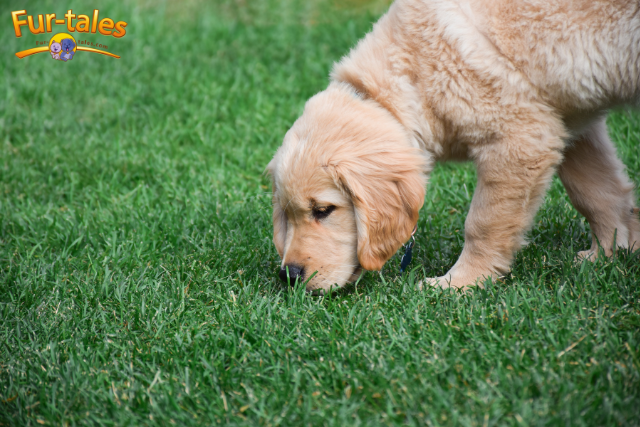
The Geography of the Sniff: How a Dog’s Nose Maps Their World and Our Neighborhoods
We experience the world primarily through sight, a vibrant tapestry of colors and shapes that defines our understanding of space and place. For our canine companions, however, the world is a far richer, more nuanced tapestry woven from scent. Their noses aren’t just tools for finding treats; they are sophisticated sensory organs that construct a detailed and ever-evolving map of their surroundings, a “scent geography” that dictates their interactions, memories, and even their sense of belonging within our neighborhoods. This article delves into the fascinating world of canine olfaction, exploring how dogs use their incredible sense of smell to navigate, interpret, and ultimately understand the complex landscape of their world.
A World Woven in Scent: Understanding Canine Olfaction
To truly grasp the concept of scent geography, we must first appreciate the sheer power of a dog’s nose. Compared to our roughly six million olfactory receptors, dogs possess anywhere from 100 million to 300 million, depending on the breed. This vast difference in sensory equipment allows them to detect odors in parts per trillion – a level of sensitivity almost unimaginable to us. Furthermore, a dog’s brain dedicates a significantly larger portion to processing scent information, highlighting its paramount importance in their perception of reality.
This remarkable olfactory power allows dogs to dissect the world into layers of scent that we can barely perceive. Each step they take on a walk isn’t just a visual journey; it’s an exploration of a constantly shifting aromatic landscape. The lamppost isn’t just a yellow pole; it’s a bulletin board of olfactory messages left by other canines – a complex communication system detailing who was there, when, and perhaps even their emotional state. The patch of grass isn’t just green; it holds the lingering scent of the neighbor’s cat, the faint trace of last night’s rain, and the enticing aroma of a buried treasure (a long-forgotten bone, perhaps).
The Scent Map: A Mental Cartography
Through these countless olfactory data points, dogs build intricate “scent maps” of their world. These aren’t visual maps in the human sense, but rather detailed mental representations organized by odor. They remember the unique scent profile of their home, distinguishing it from every other building. They recognize the individual aromatic signatures of their human family members, differentiating them even when out of sight. Their familiar walking routes are likely encoded in their brains as a sequence of distinct scent landmarks, each holding a wealth of information.
This “scent map” allows dogs to navigate their environment with incredible efficiency. They can retrace their steps by following familiar scent trails, even days later. They can identify familiar individuals from a distance based on their unique odor. This olfactory cartography is not static; it’s constantly being updated with new scents, fading aromas, and the ever-changing tapestry of their surroundings. A new dog in the neighborhood adds a significant landmark to their scent map, requiring careful investigation and integration into their existing understanding.
Scent Marking: Leaving Olfactory Footprints
A crucial aspect of canine scent geography is scent marking. When a dog urinates or defecates in a particular spot, they are not just relieving themselves; they are leaving behind an olfactory “signature,” a detailed message encoded in pheromones and other scent compounds. This scent mark acts as a form of communication, conveying information about the dog’s identity, sex, reproductive status, and even their social standing.
Other dogs who encounter these scent marks engage in a form of olfactory “reading,” deciphering the information left behind. The intensity and freshness of the scent can indicate how recently the marker was present. The specific blend of odors can reveal details about the individual. This constant exchange of olfactory information creates a dynamic social network within the canine community, all conducted through the silent language of scent. Our neighborhoods, to our dogs, are a complex web of these olfactory messages, constantly being written and read.
The Impact of Our World on Their Scent Geography
Our human-centric world significantly impacts a dog’s scent geography, often in ways we don’t fully appreciate. Our cleaning habits, while essential for hygiene, can inadvertently “erase” important olfactory information for our dogs. The strong chemicals in household cleaners can mask or eliminate familiar scents, potentially disrupting their sense of place and their ability to track familiar odors.
Similarly, our landscaping choices and the introduction of artificial scents can alter the natural aromatic landscape that dogs rely on. While we might appreciate the smell of freshly cut grass or blooming flowers, these strong odors can sometimes overwhelm or mask the more subtle but crucial scent markers left by other dogs. Understanding this can encourage us to be mindful of our dog’s need to engage with the natural scents of their environment during walks.
Enhancing Walks Through Olfactory Engagement
Knowing that our dogs perceive the world so intensely through scent can transform our daily walks. Instead of rushing them from point A to point B, allowing them time to explore and “read” their scent map can be incredibly enriching. Those seemingly endless sniffs at lampposts and bushes aren’t just dawdling; they are crucial information-gathering sessions. By giving them the freedom to engage with their olfactory world, we are allowing them to fully experience their environment and satisfy a fundamental aspect of their being.
We can also become more attuned to what our dogs are “reading” through their sniffing behavior. A sudden change in their focus or an intense interest in a particular scent might indicate the presence of another animal, a potential food source, or something else of significance in their olfactory world. Observing their reactions to different scents can deepen our understanding of their individual interests and their perception of the environment.
Conclusion: Appreciating the Aromatic Landscape
For our dogs, the world is a rich and detailed tapestry woven from scent, a “scent geography” that guides their navigation, shapes their social interactions, and forms the foundation of their understanding of our neighborhoods. By appreciating the power and complexity of their olfactory world, we can gain a deeper understanding of our canine companions and enrich their lives by allowing them to fully engage with the aromatic landscape that defines their reality. Recognizing that a walk is not just a visual or physical exercise for them, but also a crucial olfactory exploration, allows us to connect with them on a more profound level and appreciate the world through their extraordinary noses.
Image Designed Using Canva
